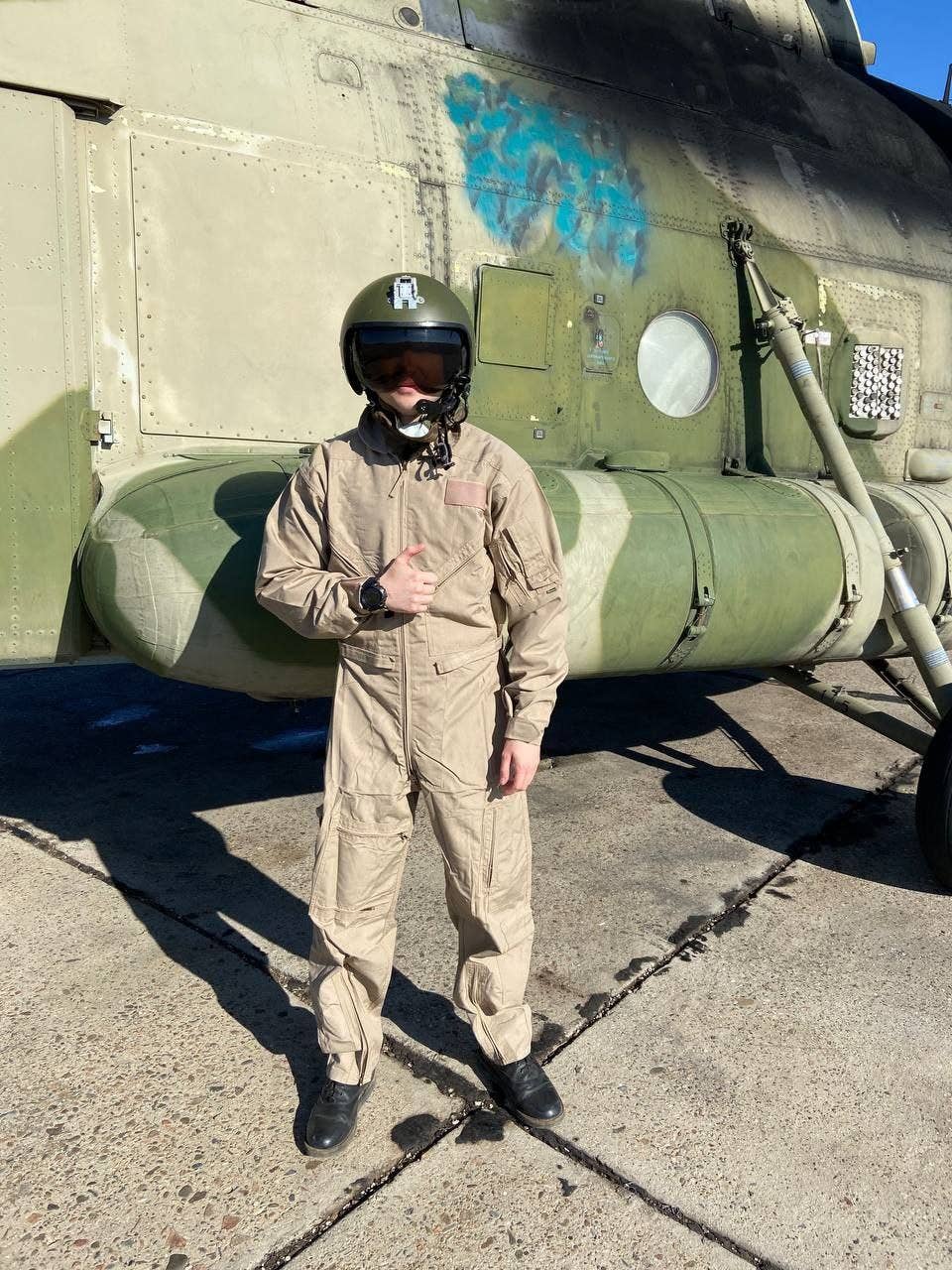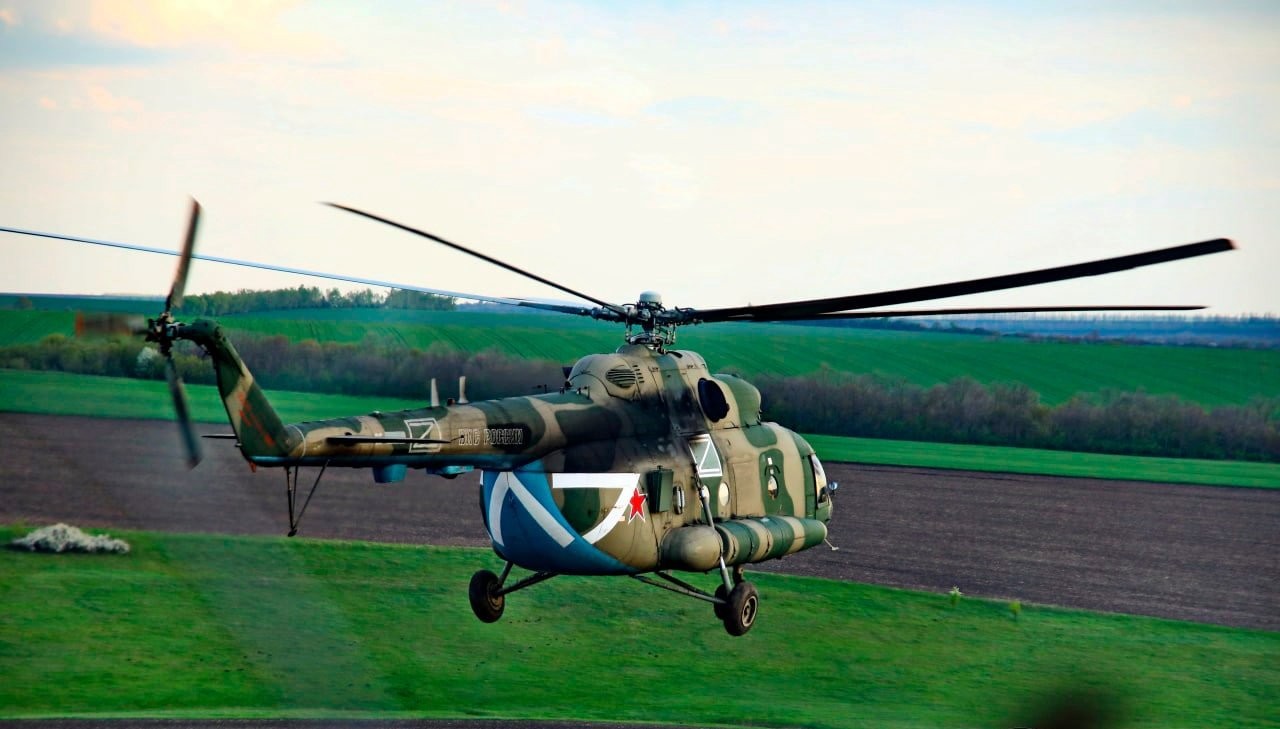In the course of its protracted conflict with Ukraine, Russia has employed a range of lethal weapons. However, the Mi-8MTPR-1 electronic warfare (EW) helicopter, which is thought to be a key element of Russia’s strategy against Ukrainian air defenses, has received little attention.
China Claims ‘Big Breakthrough’ In Deploying Hypersonic Missiles On Aircraft Carriers & Having Its Own Kinzal Missiles
Fake Threats? US Conducted Massive War Drills With S.Korea To Warn North; But Why Are F-16 Fighters Using ‘Inert’ Air-To-Air Missiles
The Mi-8MTPR-1 helicopter is an upgraded version of the standard Mi-8MTV-5-1 outfitted with the Richag-AV EW system. Moscow is believed to have employed this helicopter to conduct electronic warfare against Ukrainian air defense systems.
The Kazan Helicopters plant manufactures the helicopter, known internally by the manufacturer as Mi-8MTV-5PR. PR refers to Pomekhovyi Rychag, a helicopter jammer equipped with the Rychag system.
The use of this chopper in the Ukraine war was also recently confirmed by a photo issued by the Russian Ministry of Defense. This image was posted on the Fighter-bomber Telegram channel on October 3, 2022, featuring a Mi-8MTPR-1 electronic warfare helicopter in the background.

The tactical number, which has been painted over, was probably dark blue. This is consistent with the color of the helicopter identification numbers in the 18th Army Aviation Brigade in Khabarovsk.
To complete the missions against Ukraine, the chopper flew at more than 10,000 feet while hovering inside Russian-controlled territory to avoid being gunned down.
Meanwhile, in June, a video of the helicopter went viral, showing a Russian soldier, who looks to be a pilot, standing near it.
In the video, he described how the Rychag system allows Russian strike aircraft to enter Ukraine more deeply by suppressing the air defense capabilities of all types present in the bordering region, including Western analog systems and old Soviet systems.
Rychag-AV EW system
The Kazan Optical and Mechanical Plant (KOMZ), a division of the Radio-Electronic Technologies Concern, manufactures and mounts the Rychag-AV system on the helicopters. The system is integrated into rotary-wing aircraft, ships, and other military platforms like aircraft and ground vehicles.
This EW system can interfere with sophisticated sensor systems from 100 kilometers away. The system employs multi-beam antenna arrays with DRFM [Digital Radio Frequency Memory] to counter radiofrequency-based weapon systems. It is designed to defend helicopters, drones, ground vehicles, and naval vessels.
It is also possible to conduct radar-based intelligence gathering with the Rychag-AV. The technology can instantly assess the type of targeted radar and the best approach to jam it using an onboard database.
The cargo/passenger compartment is typically separated into two sections on the Mi-8MTPR-1. The wider rear portion houses the Rychag-AV system’s hardware, while the smaller front portion houses the system operator’s station.

The four antennas of the system are placed on each side of the fuselage. The two front antennae serve as receivers/direction finders, detecting hostile radars and determining their nature and location. The two back antennas are transmitters that produce radiation to tamper with the radars that have been spotted.
According to a pre-programmed program, the Rychag-AV system may operate autonomously without operator intervention. This employs a recorded database of adversary radars to find appropriate jamming strategies.
In semi-automatic mode, the operator chooses the jamming techniques, whereas in manual mode, the operator analyses the overall electromagnetic condition and chooses the targets to be blocked.

The first two Mi-8MTPR-1 test helicopters were built from old Mi-8 airframes. The helicopters, designated as ’61’ and ’62,’ began testing around 2010. In September 2013, the Kazan Optical-Mechanical Plant (KOMZ), a business affiliated with KRET, purportedly received a production contract requiring the delivery of 18 production-standard systems.
The new airborne EW system entered Russian military service in 2016. There are currently about 20 Mi-8MTPR-1 helicopters in the Russian Aerospace Forces, or VKS. These are divided among various Brigades of Army Aviation (BrAA).
This includes the 15th BrAA in Ostrov, Western Military District (MD), the 16th BrAA in Zernograd, Southern Military District (MD), and the 18th BrAA in Khabarovsk, Eastern Military District (MD). Additionally, a few helicopters are stationed in Russia’s airbase at Erebuni, Armenia, and Vyazma in the Western MD for the 440th Independent Helicopter Regiment.
Overall, the helicopter is claimed to be able to interfere with the operation of every radar within its range and to be capable of selective jamming (using narrow beams) to prevent interfering with its own (or another ally’s) radars working inside the jammed sector.
- Contact the author at ashishmichel@gmail.com
- Follow EurAsian Times on Google News




